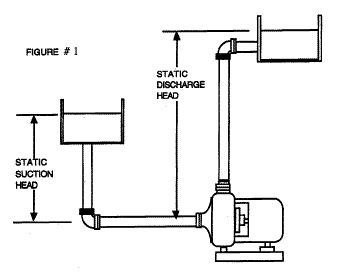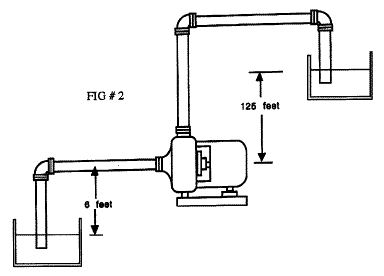Module III: Energy & Environmental Services
Lesson 6: Electrical Services – IC Engines, Pumps, motors
Topic :Pumps
11.1 Introduction :
In this chapter we will study about borewells , open wells. We will also study different pumps to take out this water from the ground.
11.2 Objective:
After completion of this lesson you will be able to
11.3 Open well or Dug well :
In the past open wells or dug wells are common. The wells are lined with stones, bricks, tile, or other material to prevent collapse. They are excavated by hand shovel to below the water table until water get stuck.. The reason was, water table was very near, depth at which the under ground water available was near. Currently no body goes for the digging the well , because the water table has gone too deep.
11.4 Bored well or Drilled wells.
They are basically hole drilled into a ground below water table. A casing is fitted to seal the well from material falling inside. These wells are relatively economical to construct. They are of varied sizes from 4” to 12” in diameter depending on the water yield in the bore and requirement of the user.
We can get ground water through bore well or open well. But wherever possible take it from bore well. If bore well and open well are on the same place and have the same depth then capacity of both of them to give water is same. This means same amount of water can be taken out from the well in 24 hours without changing their water level. Only difference in the storage capacity. Open well can store more water. In borewell we can take out only the amount of water that is getting percolating insider the well.
Well yield :
Once bore well is dugged , first question people asked is ‘How much is the yield of the bore well ?’. Selection of proper pumpset depends upon the water yield of the borewell. A pumping test is done to estimate the yield of the borewell.
The sustainable yield of a well is the amount of water that can be pumped from the well continuously over time without causing damage to the well (too much drawdown) or causing the well to go dry.
A trial pump set is put inside the borewell, capacity of the pump to discharge water is known. Head to be delivered by the pump is known. The water discharge is adjusted to run the pump set without getting dry. Amount of water given by the pump set in liter/second or m3 per second is calculated.
There are other methods as well to test yield of the borewell. Longer duration of trials gives accurate estimates. However, it is usually possible to get a reliable estimate of well in a test span of 2 to 8 hours.
Activity :
Discuss why more water is not coming in big open well than bore well ?
Discuss with bore well vendor, the details about pump test he is carrying out to determine yield of the borewell.
Pumps :
Pump is used to take water out from the well. In the past, water was taken out manually using pulley, rope and bucket. This method is still used at many places. In case of borewell, It is not possible to take out the water manually using bucket as depth is more and diameter of the bore is small.
11.5 Hand Pump :
Hand pumps are designed to take out the water from borewell manually.
For a borewell, India Mark II pump is specially developed. Design of this pump is made so that clear water comes out continuously.
There are four parts of hand pump.
Foundation of pump is very important. It is constructed for preventing used/sanitary water from entering inside the bore well. Please take following precautions :
2. Upper part of Pump
3. Pipe and rods
From water tank to the deep in the bore well, pipe (1.25” B class, blue strap) is used. While pumping rod moves up and down and water comes out through the pipe. Pipes are connected to each other hence their joints need to fix properly. Otherwise pipe may get slipped into the bore. Class B pipe is used at such places. Rods are also connected with socket by making threads on it. Rod is of 12-mm thickness and socket is welded to one rod. Check nut is fixed on another rod. With this arrangement rod does not get loosened.
4. Cylinder
Cylinder is fitted at the bottom of pipe. Cylinder is made up of iron and brass sleeves are fitted inside. Brass sleeves does not catches rust and it surface remains smooth.
There are two types of valves in cylinder. One valve is fitted at the bottom of cylinder and another is fitted to a rod. Piston is also fitted to the same rod. These valves allow water to flow in one direction. They closed down by pressure if water starts flowing in opposite direction.
When piston gets lifted along with rod at that time valve in the piston remains closed. But valve at the bottom opens and water from the bore get sucked in. After this, when rod and piston starts coming down, valve at the bottom closes with the pressure coming from above and valve at the top open to allow water to enter into pipe. To prevent leakage during piston movement, rubber washer (Cup) is used. This washer becomes soft and expands in water. Therefore water cannot come out of it.
Now Mark III types of hand pumps are available. In this hand pump, for repair there is no need to remove riser pipe for maintenance in cylinder assembly. The cylinder assembly can be removed with the help of riser pipes.
Advantages of hand Pump:
Intext questions 11.1
True / False
11.6 Types of pumps :
Positive displacement Pumps.
In the last section we discussed about hand pumps. These are positive displacement type of pumps. In which water is physically displaced and pressure is build up by piston. Movement of piston pushes water upwards. Oil pumps are examples of positive displacement pumps.
Centrifugal Pumps
Other types of pumps are centrifugal pump. In which rotating impellers imparts kinetic energy to the fluid around it. This kinetic energy is then converted into pressure energy due to typical shape of the casing.
A centrifugal pump has two main components:
I. A rotating component - Impeller and a shaft
II A stationary component comprised of a casing, casing cover, seal and bearings.
Impeller : Impeller is fitted on shaft and it is rotated by electric motor or diesel engine. This impeller imparts kinetic energy to liquid around it. Velocity of the liquid increases. Common types of impeller are shown in the figure
Submersible Pumps :
Jet Pump : Unlike other pumps, a jet pump has no moving parts. A sim-ple jet pump, illustrated in figure , consists of a jet supply line, a jet or nozzle, a suction line, a suction chamber, a diffuser, and a discharge line.
|
Precaution while using Pump :
Most of the pump requires priming before start of the pump. Priming means the pump casing has to be filled with water before starting the pump. Otherwise pump will not function.
l
Intext questions 11.2
Fill in the blanks
11.7 Calculating head required for the pump :
Selection of head (pressure) required to be developed by pump is very important. Head or height is measured in meters. 
If you will refer to above Fig , to calculate the head of the pump.
Total head of the water to be lifted by pump = Static discharge head – Static suction head + friction loss
As shown in below fig 2 , If the water storage is below the pump center line then

Total head to be lifted by pump = Static discharge head + static suction head + friction loss
Friction loss :
There is always loss of pressue due to resistance offered by pipes , fittings and bends when water passes through a pipe line. Friction loss is approximately taken as 0.01% of the total pipe length. Means for every 100mtrs of pipeline, 1 mtr is added as a friction loss to calculate head of the pump.
Intext questions 11.3
11.8 WHAT HAVE YOU LEARNT:
Open wells, bore wells, hand pump, types of pumps, calculation of head , frictional loss etc.
11.9 TERMINAL QUESTIONS:
Answers to the Intext questions:11.1
Answers to the Intext questions 11.2
Answers to the Intext questions 11.3
11.10 Suggested activity
Practical : To dismantle pump and observe its part.
Test the pump for its flow – head curve. { Details can be obtained from pump dealer)
Source: http://learningwhiledoing.in/UploadedFiles/LessonFile/Energy_Electrical_Electrical%20Services_Document_Pumps.doc
Web site to visit: http://learningwhiledoing.in/
Author of the text: indicated on the source document of the above text
If you are the author of the text above and you not agree to share your knowledge for teaching, research, scholarship (for fair use as indicated in the United States copyrigh low) please send us an e-mail and we will remove your text quickly. Fair use is a limitation and exception to the exclusive right granted by copyright law to the author of a creative work. In United States copyright law, fair use is a doctrine that permits limited use of copyrighted material without acquiring permission from the rights holders. Examples of fair use include commentary, search engines, criticism, news reporting, research, teaching, library archiving and scholarship. It provides for the legal, unlicensed citation or incorporation of copyrighted material in another author's work under a four-factor balancing test. (source: http://en.wikipedia.org/wiki/Fair_use)
The information of medicine and health contained in the site are of a general nature and purpose which is purely informative and for this reason may not replace in any case, the council of a doctor or a qualified entity legally to the profession.
The texts are the property of their respective authors and we thank them for giving us the opportunity to share for free to students, teachers and users of the Web their texts will used only for illustrative educational and scientific purposes only.
All the information in our site are given for nonprofit educational purposes